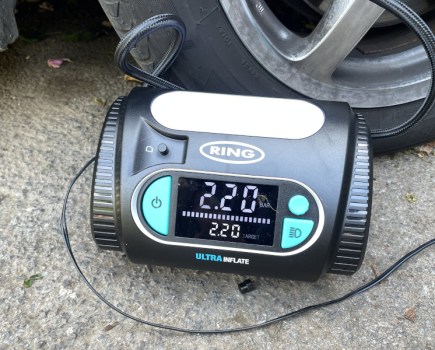Towards the end of the ‘Fifties, the British Motor Corporation (BMC) decided to try and lever a healthy slice of military business away from Land Rover by producing a cheap, utility-style vehicle that would also appeal to country dwellers. Although BMC had already failed to impress the Ministry of Defence with its Sir Alec Issigonis-penned Guppy project, the noted design engineer went back to his drawing board and developed a lightweight, all-terrain front-wheel drive military prototype codenamed the ‘Buckboard’ while planning the now legendary Mini.
This rugged, stripped-down, Mini-based variant utilised the little car’s front and rear subframes, attached to a lightweight monocoque, and by the time the Mini was launched in 1959, several prototype lightweight ‘Buckboards’ had been built for evaluation by the armed forces. It was proposed by BMC that the British Army should seriously consider the Buckboard – or ‘Moke’ as it was later known – as an all-terrain vehicle capable of being parachuted into a combat zone for the transportation of special service personal, kitted out with light arms or demolition gear.
The front-wheel drive Moke was light enough to be picked up and carried by its occupants if it got stuck on cross country operations. However, a severely limited ground clearance due to the vehicle running on standard 10-inch Mini wheels, and a lack of power from its detuned 848cc A Series power unit, proved to be the Moke’s Achilles’ heel as a serious military vehicle. A revised version, with a slightly shortened wheelbase and better ground clearance, also received the thumbs down from the army, and the only other military interest for the Moke came from the Royal Navy, which thought it would be ideal for use on the deck of an aircraft carrier.
To make the Moke’s limited all-terrain capabilities more acceptable to the military, a handful of twin-engine, four-wheel drive versions were developed. Called the ‘Twini’, these variants had a second Mini-derived front subframe, complete with an 848cc engine grafted onto the rear of the vehicle. The Twini’s twin hydraulically-operated clutches were cleverly linked together, while a second gearchange for the rear power unit was located on the right-hand side. This enabled a skilled driver to select a different ratio at each end, resulting in some entertaining, but not very military-like, handling characteristics.
In 1963, BMC decided the only way forward with its Buckboard project was to re-engineer the vehicle as a two-wheel drive civilian version and offer it to land owners and small holders. The MkI Moke (the name was an ancient dialect term for a donkey) subsequently went on sale in the UK in the early part of 1964 for the princely sum of £406 7s 1d, including taxes. This was a whopping amount of money for the time (a basic Ford Anglia 105E only cost a hundred pounds more) and although BMC originally hoped its unique little Moke could’ve been sold as a commercial, Customs and Excise saw otherwise and classified it as a passenger vehicle.
Anyone buying a MkI Moke with the aim of using it on the road would need to add a removable canvas top as an optional extra, along with windscreen washers and a passenger side wiper, passenger seats, grab handles and a heater, all on top of the basic price. These options were delivered separately and owners sometimes ended up fitted these items at home.
Moke bodywork was basic to say the least and at first the only colour available was Spruce Green (white was added as a later option). The Moke’s monocoque was made up from a standard Mini bulkhead, with toeboard pressings welded to a unique central floorpan, which was in turn sandwiched between twin-side pontoons that incorporated a fuel tank, battery box and a tool or storage locker.
British-built Mokes were powered by a transversally located 848cc A Series engine, detuned to run on low-octane fuel. Like the Mini, the Moke’s four-speed gearbox was in the engine’s sump and the Mini van’s parts bin supplied the suspension components. In 1967, BMC upped the ante and introduced the MkII Moke, complete with an additional passenger-side wiper and a redesigned indicator stalk, which now incorporated the vehicle’s horn and the previously foot-operated dipswitch.
Although UK production ended in 1968 after 14,518 examples had rolled off the Longbridge assembly lines, Moke production started in Australia in 1966 where the vehicle was known as the Morris Mini Moke. Engine capacity for Australian-built Mokes was increased to 998cc, later to 1098cc, and in 1972 Leyland Australia produced the 1275cc Moke Special Export or Californian. To satisfy US safety legislation, a MG Midget fuel tank was located beneath the Moke’s rear load area. Australian-built Mokes even served in the Israeli Army and in the mid ‘Seventies Leyland Australia developed a single-engined four-wheel drive prototype, as well as producing a pick-up version with a drop-side bed and canvas ‘roof’ over the driver.
Over 26,000 Mokes were built in Australia and as production wound down, manufacturer was transferred in 1980 to a British Leyland subsidiary in Portugal. Although initially similar to the Australian-built Mokes, later Portuguese produced vehicles were modified to accept what were at the time current British-built Mini components. Production continued in Portugal until 1993 even though the Rover Group had sold the Moke brand in 1990 to Cagiva, an Italian motorcycle manufacturer based in Bologna.
Just 1500 examples were produced in Italy and although Mokes have been used as rental cars and courtesy vehicles in many idyllic resorts, the most fondly remembered examples are probably those candy-stripe-topped Mokes that starred in the ‘Sixties TV series ‘The Prisoner’, starring Patrick McGoohan.
Over the years there have been several plans to re-introduce the Moke, the latest being the Australian-based Moke International’s plan to release a revitalised example any time now.
TECH SPEC
1965 MINI MOKE
ENGINE: 848cc
POWER: 34bhp
TOP SPEED: 65mph
0-60mph: 21.8 secs
WEIGHT: 533kg




